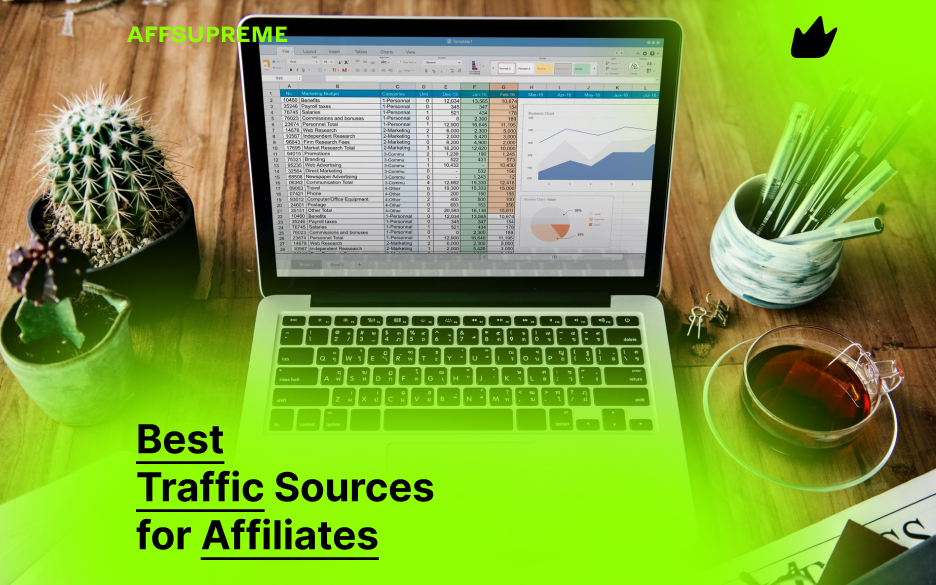In affiliate marketing, traffic is everything. But not just any traffic — you need high-quality, targeted visitors who are ready to convert. As competition intensifies in 2025, choosing the right traffic sources has become critical for affiliate success.
In this article, we’ll break down the best traffic sources for affiliates, based on real performance, ROI potential, and conversion power.
1. SEO (Search Engine Optimization)
Organic traffic from search engines is one of the most powerful and sustainable sources for affiliate marketers. If you own a website or blog, SEO can deliver long-term, passive traffic with high buyer intent.
Why it works:
-
Free, ongoing traffic after ranking
-
High conversion rates from search intent
-
Builds authority and trust
Tips:
-
Focus on long-tail keywords
-
Create high-quality, problem-solving content
-
Optimize for Google Snippets and Core Web Vitals
2. PPC Advertising (Pay-Per-Click)
If you want fast traffic, PPC is a go-to method. Platforms like Google Ads, Bing Ads, and native ad networks allow you to drive traffic to affiliate offers almost instantly.
Top platforms:
-
Google Search & Display Ads
-
Microsoft (Bing) Ads
-
Native Ads: Taboola, Outbrain, Revcontent
Pros:
-
Scalable traffic
-
Granular targeting options
-
Immediate results
Cons:
-
High competition
-
Requires budget and tracking setup
3. Social Media Platforms
Social media isn’t just for engagement — it’s a rich source of affiliate traffic if used strategically. Different platforms suit different niches and content formats.
Best social channels for affiliates in 2025:
-
Facebook: groups, retargeting ads, community building
-
Instagram: reels, stories, influencer content
-
TikTok: viral short videos, product reviews
-
Pinterest: visual content for evergreen traffic (great for lifestyle, food, DIY)
Pro Tip: Combine organic posting with paid promotion for faster growth.
4. Email Marketing
Building an email list remains one of the highest-converting traffic strategies in affiliate marketing. Your email list is a true asset you control — unlike social platforms or algorithms.
Why email works:
-
Direct, personal communication
-
High ROI (up to $42 per $1 spent)
-
Excellent for nurturing trust and repeat clicks
Best practices:
-
Use lead magnets to grow your list
-
Segment your audience
-
Automate follow-up sequences
5. Push Notification Traffic
Push notifications are a low-cost, high-volume source of affiliate traffic — especially for time-sensitive offers like CPA, sweepstakes, or flash deals.
Benefits:
-
Low CPC
-
High CTR (Click-Through Rate)
-
Instant delivery to users
Top platforms: PropellerAds, RichPush, Evadav
6. Influencer Marketing
Partnering with micro-influencers (1,000–50,000 followers) allows you to reach highly engaged, niche audiences who trust the content creator.
Where to find influencers:
-
TikTok & Instagram (for lifestyle, beauty, fitness)
-
YouTube (reviews and tutorials)
-
Twitter/Threads (finance, tech, crypto)
Pro Tip: Focus on engagement rate, not just follower count.
7. Forums, Communities & Q&A Platforms
If you want laser-targeted traffic, forums and Q&A sites are goldmines — especially when you provide real value.
Examples:
-
Reddit: Participate in niche subreddits
-
Quora: Answer relevant questions with helpful insights and links
-
Discord servers: Join private communities related to your niche
Warning: Avoid spamming — always focus on helping first.
Conclusion
The best affiliate traffic source depends on your niche, budget, and skill level. However, the most successful affiliate marketers use a multi-channel approach and constantly test and optimize.
Top 3 Traffic Sources for Affiliates in 2025:
-
SEO – long-term passive growth
-
TikTok & Short-Form Video – fast reach and engagement
-
Email Marketing – sustainable income and high ROI


